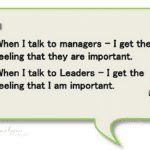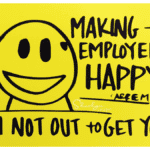(Editor’s Note: Today’s post is brought to you by our friends at SilkRoad, a global leader in Talent Activation. SilkRoad recently announced that Carey Lohrenz, the first female to pilot an F-14 Tomcat Fighter jet for the Navy will be the keynote speaker at their annual Connections conference taking place in May. Hope to see you there! Enjoy the post.)
The primary goal of onboarding is to make employees productive. The better the onboarding process, the faster an employee can engage with the organization. The Society for Human Resource Management (SHRM) cited an Aberdeen Group study that found 86 percent of respondents felt a new hire’s decision to stay with the company is made within the first six months of employment. For many companies, that aligns with their onboarding process.
So, it makes sense for onboarding topics to be ones that help employees become productive. For example, I believe many of the traditional topics covered during orientation like benefits, company policies, etc. contribute to an employee’s productivity. The sooner an employee learns about “me” related issues, the sooner they can focus on their work.
In addition to those topics, employees need to learn how to get things done within the organizational structure – both formally and informally. That’s the reason many organizations use collaborative hiring techniques and buddy systems. Those programs provide new employees with resources that can help them learn the informal rules.
Organizations with large complex workforces are challenged to maintain engagement and foster a culture that’s tightly connected to the organization’s goals after a new hire’s first six months. It’s widely known that employees make the decision to either stay or go within that time frame.
It’s also the reason that I believe organizations need to consider adding feedback training to their onboarding process. At some point, the path to getting things done with others involves feedback.
The Two Types of Feedback
Unfortunately, the word feedback has been given a bad rap over the years and most people associate feedback with something negative. Feedback is not discipline, nor is it punishment. It’s information about a person’s performance.
There are two types of feedback: positive and negative. The purpose of both is to help employees grow professionally, whether that’s to strengthen the things they do well or improve other behaviors.
If someone only delivers negative feedback, they’re sending the wrong message, i.e. “no news is good news”. That’s not an effective way to communicate. For example, if the only time Jose meets with Leonard is to give him negative feedback, then every time they meet, Leonard will be waiting for the other shoe to drop (the negative feedback) and not paying attention to Jose’s message.
On the other hand, if you only deliver positive feedback, it could be interpreted as fake or insincere. Most people realize they’re not perfect. It’s okay to say that improvement is needed. The goal is to provide both types of feedback.
Positive and negative feedback isn’t just a manager thing. It goes for employees too. If employees know how to deliver feedback, they have the ability to discuss with their manager the employee experience. Is it what was promised during the hiring process?
Three Characteristics of Good Feedback
But it’s not only what is said, it’s who says it. Yes, managers need to deliver feedback and in many cases, are the primary giver of feedback. But if the manager is the only person who delivers feedback, it can be overwhelming. Think about it – everyone must go to the manager and tell them the feedback. Then the manager communicates the feedback to the employee. This approach goes against the three characteristics of delivering good feedback:
- Be timely. Feedback should be delivered near the time that the behavior happened. If someone waits six months to tell a colleague they did a good (or not-so-good) job, whatever it was must not a been super important.
- Be specific. If you want someone to develop good work habits, tell them specifically what they do that’s awesome. Saying “good job” isn’t enough. Feedback needs to be specific so employees know what behaviors to continue and those to correct.
- Be accountable. The person delivering feedback is asking someone to be accountable for their actions. In turn, they need to be accountable for the feedback they’re providing. Feedback should offer support. And the person delivering feedback should be prepared to answer any questions.
That’s why employees need to play a role in delivering feedback. Employees need to be held accountable for working with their colleagues to achieve company goals. When a colleague does something great, they should hear it from the employee. And when something could have been done differently, they also need to hear that from a trusted and respected co-worker.
Managers don’t need to be a part of every employee feedback conversation. In fact, employees might appreciate hearing different perspectives about their performance – from managers, colleagues, etc. And, some employees might appreciate being given the opportunity to improve their performance on their own.
If you want to learn how to create a company culture that embraces feedback at every level in the organization, join me and SilkRoad on Tuesday, March 21 at 12n for a webinar that will outline the steps for introducing a feedback program into your organization. And if you can’t make it, just register and the recording will be sent to you.
2










Sharon says
Thank you for this piece. I have recently “blown up” our onboarding process. It is now running more efficiently, but best news is that it is new – hire focused. Looking to move it to the next level, and will implement some of your suggestions. Thank you!
Brooke Harper says
Very insightful article. I am partial in feedback process. Onboarding feedback is essential – it shows that organization cares about new hires and how they are shaping. In my opinion, before we introduce feedback process, we should establish first the purpose in implementing it. It is advisable to remain constructive and not to be over critical. The main concern is to convey to the person how valuable his role to the organization and how to help him improve.